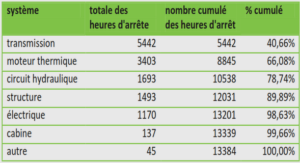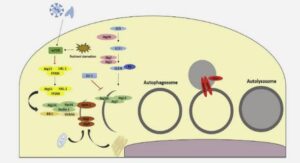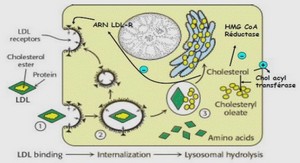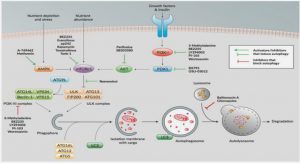Salmonella
Salmonella is the first recorded bacterial cause of foodborne gastroenteritis in France, as well as the first cause of relative hospitalizations and deaths (InVS 2004). It is a major public health concern and as such gave rise to a nationwide intervention at the farm level targeting Enteritidis and Typhimurium serotypes in the breeding flocks of laying hens and broilers from 1999 on. The Gallus gallus plan has been successful at mitigating the number of human cases (Poirier, Watier et al. 2008), as other similar plans conducted in other European countries (Edel 1994; Wegener, Hald et al. 2003), showing the efficiency of intervening at an early point in the food chain. Though, the challenge remains as Salmonella is still a first plan public health issue (Sofos 2008). Attributing human cases to the potential food-sources is a key step to identify, prioritize and assess the impact of interventions from the farm level on (Batz, Doyle et al. 2005). The microbial subtyping attribution approach, which allows attributing human cases at the reservoir point, has already been applied successfully for such purposes in Denmark. It relies on the model published in 2004 by Hald et al, and which requires representative data on microbial type repartition both in human and in food animals (Hald, Vose et al. 2004; Mullner, Jones et al. 2009). To answer such issues, the French integrated surveillance system for Salmonella has been developed in the European and national regulatory frame (David, Danan et al. submitted). It covers the whole food-chain from the breeding farms to the human cases and is thus well adapted to the microbial subtyping attribution approach. Many actors are involved in this surveillance system, which allows disposing of different and complementary expertises (David, Danan et al. submitted). The data on the human cases are collected by the National Reference Centre (NRC), and the National Public Health Institute (InVS) centralizes the data on outbreak related cases which are submitted to mandatory declaration. For what concerns the data on the sources contamination, several databases are available. For this work, we selected the data collected by the Food Directory 177 of the French Agriculture Ministry (DGAL) in the frame of the institutional surveillance. We also used data collected in the frame of a generalist passive surveillance network (Salmonella Network, SN) of the French Food Safety Agency (AFSSA). The first dataset gathers representative prevalence data per microbiological type for the main channels, ideal for attribution. The passive dataset of SN, allows disposing of data on supplementary foodanimal sources, which can be important as one of the assumptions of the attribution model is that all cases are linked exclusively to the included sources (Pires, Evers et al. 2009). We thus applied the microbial subtyping approach with both types of data, as to assess the opportunity to use the passive data in such an approach as a complement for active data, and studied the impact of the differences between the two kind of animal data on the model results. For this purpose, two different datasets were constituted, gathering the human data on Salmonellosis cases and either active surveillance data or passive surveillance data on the food-animal sources. The impact of some of the data characteristics on the attribution results has first been studied, using a simple model (David, informative information), which allows having a more immediate insight on the interaction between the data and the model (Zwietering 2008). The general comparison of the attribution results obtained according to the surveillance type, was made using the Bayesian model described by Hald et al (2004), with an adapted informative prior, as proposed in a former paper (David, informative information).
Materials and methods
Human cases
The human cases data were retrieved from NRC and InVS databases for the year 2005, which was the last year for which complete information on the strains was available (serotype and subtype). The cases correspond to confirmed non-Typhi Salmonellosis cases which strains, or analysis reports, have been sent on a voluntary basis to the NRC by public and private microbiology laboratories, together with epidemiological information. As the model is designed to attribute domestic sporadic cases, i.e. cases which are not related to an outbreak and have been infected on the national metropolitan territory, we gathered information on recent travels and outbreaks. Information regarding travelling abroad was available in the CNR database, the outbreak-related cases were identified by confronting the InVS outbreak database and the CNR database. The identified travel and outbreak related case were excluded from the dataset as well as the cases registered in the outseas departments and territories. For each outbreak, one case is kept in the dataset to represent it in the model.
Food-animal sources
Among the available datasets on animal food sources (David, Danan et al. submitted), we selected databases retrieving data at the national level, issued either from routine surveillance or large scale, long-term studies (at least one year). The data on the animal sources should have been collected in 2005 to match the human data, be representative and encompass at least the main channels (layers, broilers, pigs, turkeys, cattle). As the microbial subtyping approach attributes at the reservoir-level, we focused on data collected either at the farm level or at the abattoir level, as early as possible in the slaughter line. 179 Active surveillance In the frame of the European regulation, and to prepare the enforcement of the zoonoses directive, one year long national prevalence studies have been conducted from 2005 to 2007 in the main animal channels either at the farm (layers, broilers, turkeys) or at the slaughterhouse level (pigs). For each food-animal species, a representative sample of flocks or carcasses has been tested for Salmonella, 519 layer flocks, 371 broiler flocks, 331 turkey flocks and 1 166 pig carcasses. All isolates were serotyped and the estimated prevalences were adjusted for the flock size for layers, broilers and turkeys. Data on cattle come from the national surveillance plan of antimicrobial resistance in indicator and zoonotic bacteria in cattle, a national annual monitoring plan aiming at evaluating in this channel the prevalence of resistant bacteria, among which Salmonella. These data, thanks to the sampling design of the studies they are issued of, are representative of the French prevalence level at the production stage. Though, the results for broilers, turkeys and pigs are not for 2005 but for 2006 (broilers) and 2007 (turkeys and pigs). Indeed, no representative active surveillance studies were available for 2005 for those channels at the measurement points focused. Passive surveillance SN centralizes strains and analysis reports on non human strains of Salmonella, sent on a voluntary basis by a network of private and public veterinary laboratories (David, Danan et al. submitted). We extracted the 2005 serotyping data for the 5 main channels plus sheep, ducks, other poultry and sea products. The “sea products” category gathers data on fish, shellfish and seafood, the “other poultry” category gathers data on geese, guinea fowls, pheasants, quails and pigeons. We only included strains collected at the farm level, on production animals and their environment and at the abattoir level on carcasses. Strains relative to breeding animals, to diseased animals or which origin was unclear were excluded. 180 For cattle, an overrepresentation of pathogenic strains has been identified at the farm level. As a consequence, for this channel, we only included the strains collected at the abattoir level.






